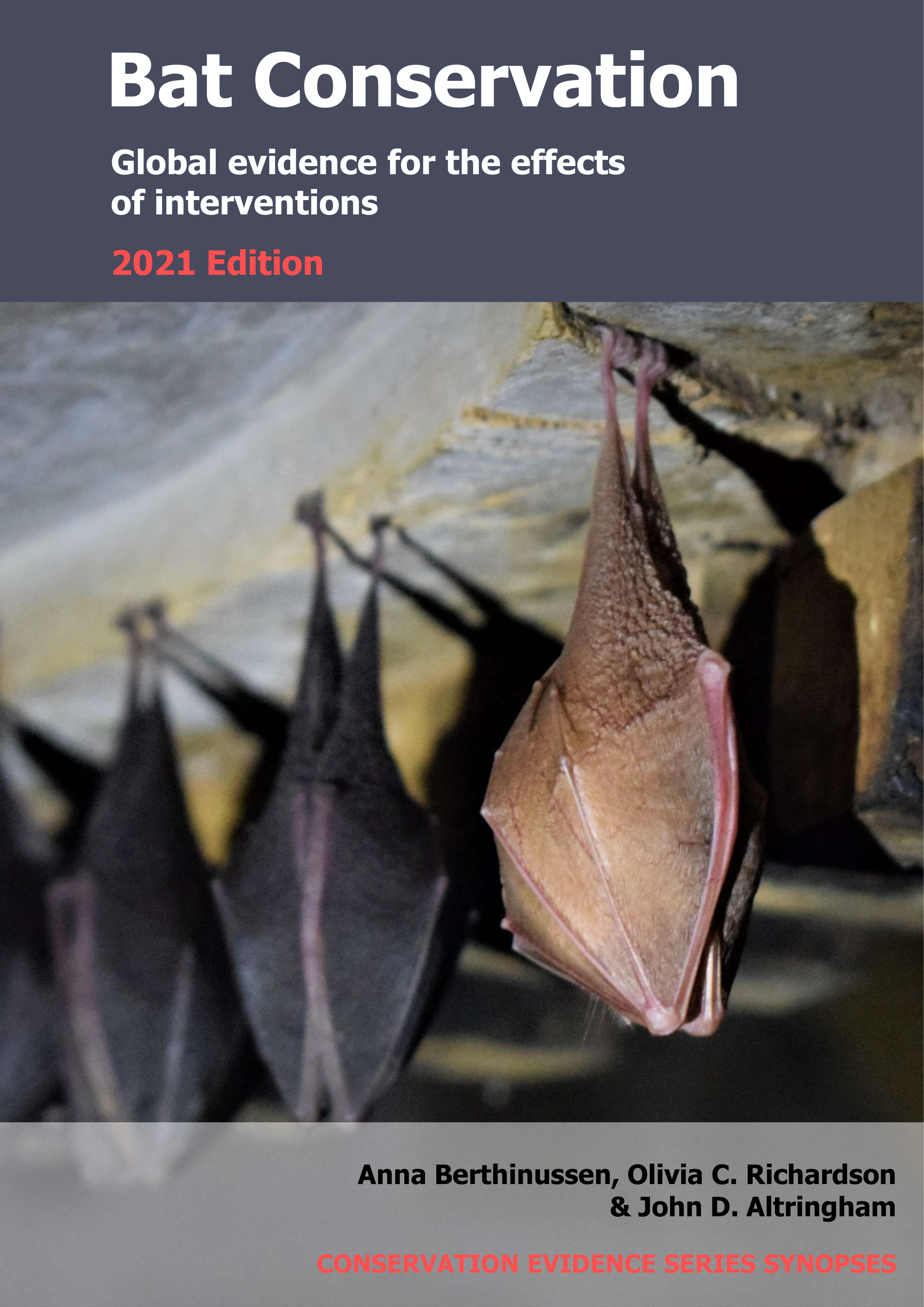Modify bat hibernacula environments to increase survival of bats infected with white-nose syndrome
-
Overall effectiveness category Unknown effectiveness (limited evidence)
-
Number of studies: 1
View assessment score
Hide assessment score
How is the evidence assessed?
-
Effectiveness
50% -
Certainty
30% -
Harms
10%
Study locations
Supporting evidence from individual studies
A replicated, randomized, controlled study in 2013–2014 in a laboratory in Pennsylvania, USA (Johnson et al 2014) found that bats infected with the white-nose syndrome fungus Pseudogymnoascus destructans were more likely to survive and stayed in hibernation for longer when placed in hibernation chambers at 4°C than at 10°C. A greater proportion of bats infected with the white-nose syndrome survived during hibernation at 4°C (43–67% of 14–15 bats) than at 10°C (7–53% of 14–15 bats). Infected bats also stayed in torpor for longer at 4°C (average 9–12 days) than at 10°C (6–7 days). For uninfected control bats, no significant differences were found between the two temperatures for survival (4°C: 80% of 14–15 bats survived; 10°C: 57% of 14–15 bats survived) or hibernation duration (4°C: average 13 days; 10°C: 11 days). In November 2013, 147 hibernating little brown bats Myotis lucifugus were collected from two mines. Bats were randomly placed into five groups for each of the two temperature treatments (4°C and 10°C; total 14–15 bats/group). Four groups were inoculated with different amounts of the white-nose syndrome fungus (500, 5,000, 50,000, or 500,000 spores). One control group was inoculated with a harmless saline solution. All bats were fitted with temperature dataloggers and placed within flight cages with internal chambers set to 4°C or 10°C (and ≤90% relative humidity) for 148 days.
Study and other actions tested
Where has this evidence come from?
List of journals searched by synopsis
All the journals searched for all synopses
This Action forms part of the Action Synopsis:
Bat Conservation
Bat Conservation - Published 2021
Update 2020





)_2023.JPG)














